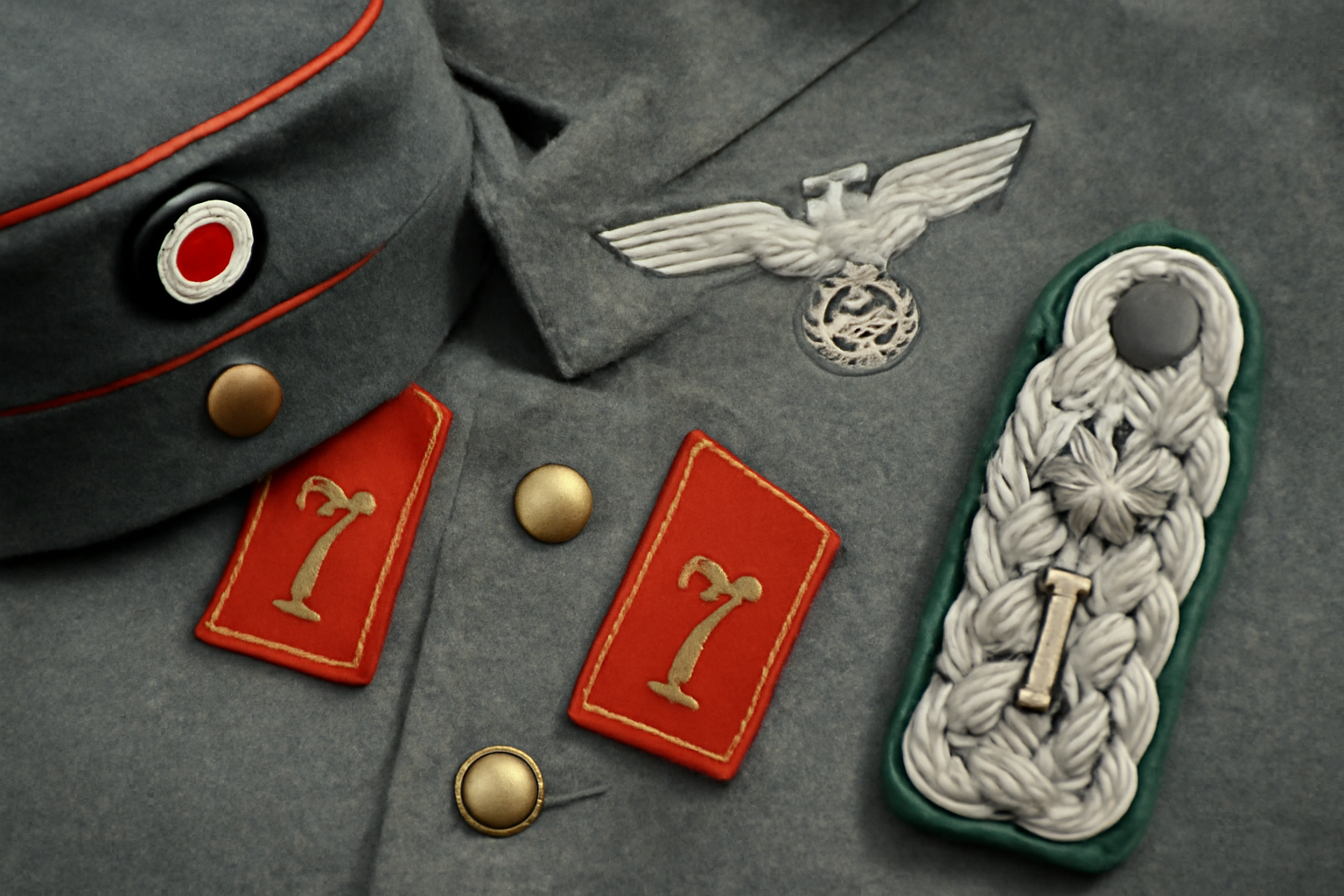
German WWI Insignia Explained: Understanding Military Rank and Identity
Published on Jul 16, 2025
Introduction: The Fascinating World of German WWI Uniform Insignia
The German WWI uniform insignia holds great significance in the history of military uniforms, representing a symbol of authority, rank, and specialized service. From the iconic eagle crest to the intricate shoulder boards, these insignia were crucial in distinguishing the different branches and ranks within the German army. Understanding the history and evolution of these insignia not only adds depth to the study of military history but also aids in collecting authentic replicas today.
Whether you're looking to explore historical military uniforms or are intrigued by the detailed craftsmanship of these insignia, this guide will give you a comprehensive understanding of the German WWI uniform insignia and how they influenced later uniforms, including the famous WW2 German shoulder boards and Waffen SS colors.
For collectors or those interested in owning a piece of history, you can find authentic World War One German Army Uniforms and replicas at Paddelaters.com.
The Significance of German WWI Uniform Insignia
The German Imperial Army, during WWI, used a variety of insignia to symbolize rank, division, and specialized roles. These insignia were worn on hats, collars, shoulder boards, and tunics, each serving a distinct function. The insignia not only helped in identifying a soldier’s rank but also signified their role within specific branches such as infantry, artillery, or engineers.
Types of German WWI Uniform Insignia
1. Collar Insignia:
The collar insignia was one of the most recognizable symbols on the uniform. These insignia were typically embroidered or metallic and featured the emblem of the unit or branch. Infantry regiments, for example, used different motifs compared to those of the artillery or engineers.
2. Shoulder Boards:
Shoulder boards, or "Schulterklappen," were used by officers to display their rank. They were often adorned with intricate braiding and were a distinguishing feature in the WWI German army uniform. The design and color of the shoulder boards varied depending on the soldier's rank.
3. Hat Insignia and Cockades:
The cockade on the military hat was another important element of German WWI uniform insignia. It featured a black, white, and red motif symbolizing the colors of the German Empire. The placement and design of the cockade would vary depending on the branch of service.
4. Rank Insignia:
Rank insignia were commonly worn on the sleeves or cuffs of the uniform. The ranks were denoted by a series of stripes, stars, or chevrons, which were highly detailed and specific to each role.
For more detailed insights into authentic German WWI uniform replicas and their insignia, check out Explore WWI German Uniforms and Great Coats.
Evolution into WW2: The German Army Insignia
As the years passed, the German army underwent significant changes, especially during the transition from WWI to WWII. The evolution of the uniform insignia was an important aspect of this transformation.
In WWII, the German Army Insignia continued to evolve, with new designs for shoulder boards and new distinctions introduced for specialized units like the Waffen SS. The shoulder boards, once simple, became more elaborate, with a distinct color and design that helped identify different military ranks and branches more clearly.
Waffen SS Colors and Insignia
The Waffen SS, the armed wing of the SS during WWII, had a unique system of insignia that was distinct from the regular German army. The Waffen SS colors were used to denote the different divisions within the SS. For example, the black SS uniform was paired with white and silver insignia for officers, while other units had different colored insignia that denoted their specific division.
The Waffen SS also featured a distinct pattern of shoulder boards, which were typically silver or white and often featured the unit’s specific emblem. These colors and patterns were essential in identifying officers and soldiers, much like their WWI counterparts.
For collectors interested in exploring historical WW2 German shoulder boards and Waffen SS insignia, you can visit our WW2 German Army Uniform collection for more.
Table: Comparison of WWI and WWII German Army Insignia
Feature WWI Insignia WWII Insignia
Design Complexity : Simple, with basic colors and patterns . Elaborate, with complex designs
Shoulder Boards Braided, simple color coding, Detailed, often silver or gold
Cockades : Black, white, and red motifs , Similar but with variations by unit
Rank Insignia Basic rank indicators , more detailed with larger emblems
Waffen SS Colors Not present in WWI Key feature with specific colors for different divisions
Conclusion: The Enduring Legacy of German WWI Uniform Insignia
The German WWI uniform insignia played a critical role in distinguishing soldiers by their rank, role, and unit. The designs, materials, and colors used in these insignia were not only important for military identification but also became symbols of authority and pride for the German army.
For collectors and history enthusiasts, understanding the evolution of German military uniforms, from the detailed insignia of WWI to the more complex and distinctive insignia of WWII, offers valuable insights into the military history of the era.
For those looking to own authentic WWI German uniforms or historical collectibles, visit Paddelaters.com for a selection of Imperial German Army Uniforms and related products.
